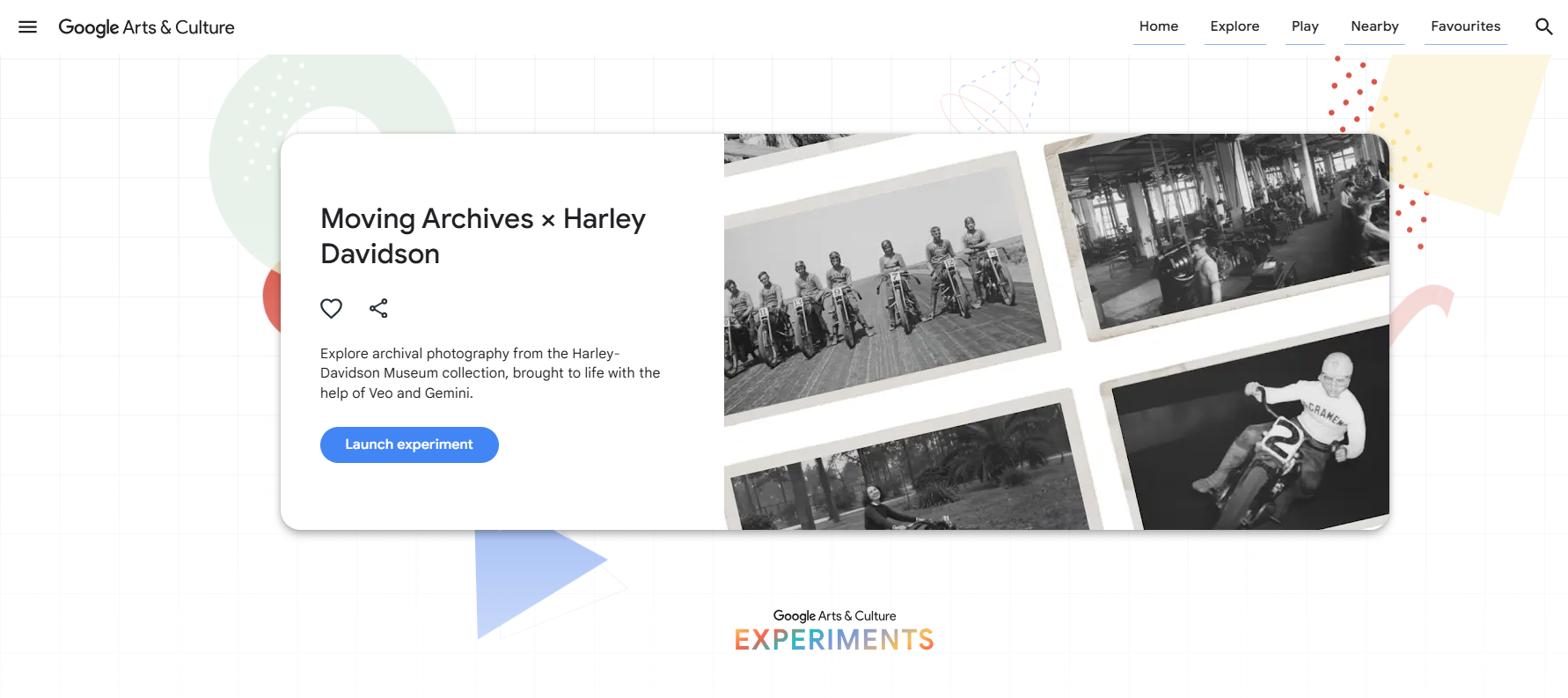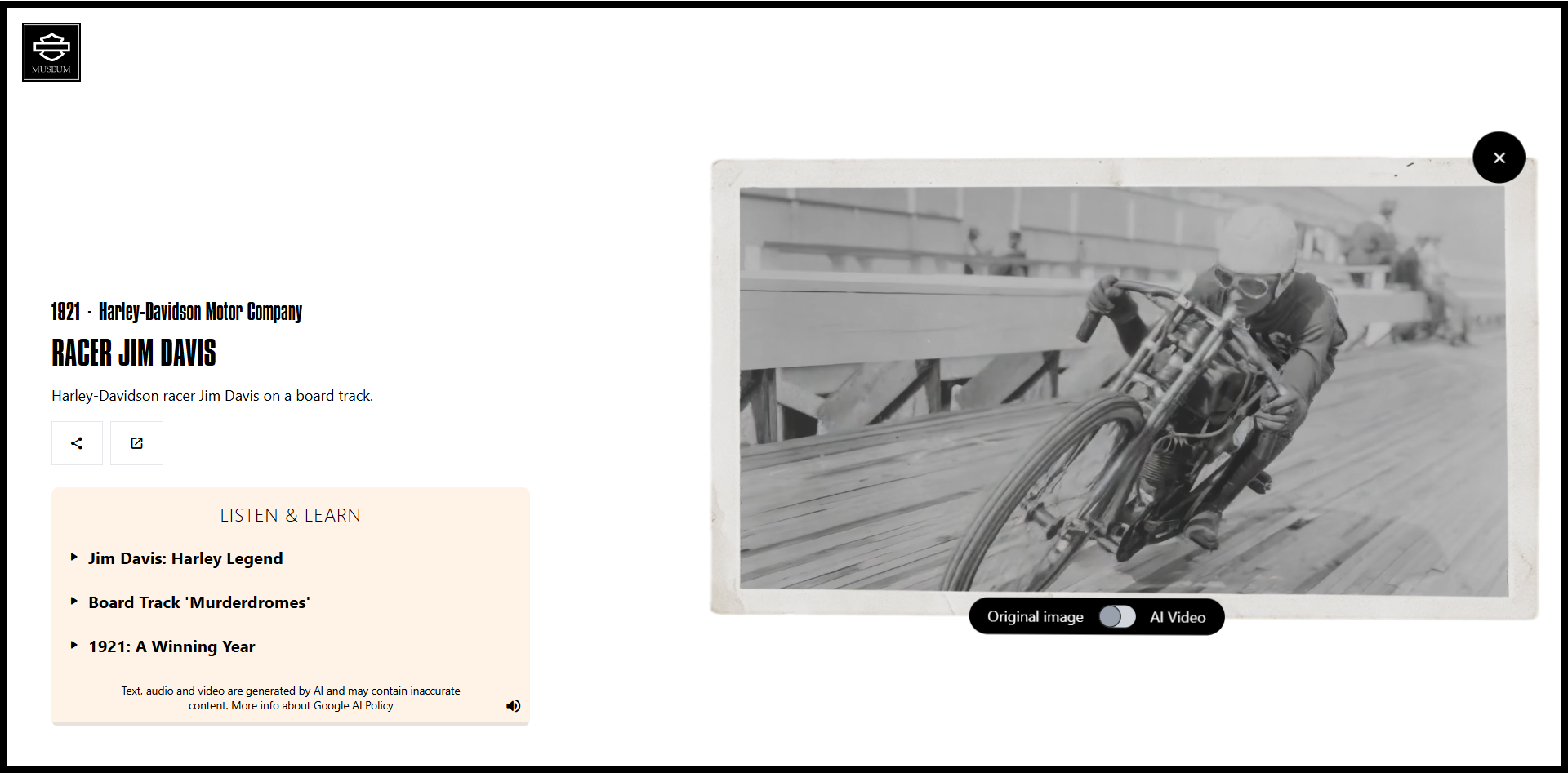Google Arts & Culture Lab has teamed up with the Harley-Davidson Museum to launch “Moving Archives.” This is a Veo-powered project that turns century-old still photos into subtle, looping animations complete with Gemini-generated voiceovers and text insights.
Inside Moving Archives
In Moving Archives, Google applied Veo’s animation technology to a selection of the museum’s archival images. You can switch between the original still photograph and its animated version with a single click. In one scene, you might see a 1920s factory floor gently hum back to life or board-track racers flash across the screen. At the same time, Google’s Gemini model delivers short audio in the style of old radio broadcasts and text snippets that explain what you’re seeing, whether it’s the evolution of motorcycle design or the spirit of adventure in early riders.
This marks the first rollout of a broader series under Google Arts & Culture’s Artists in Residence program, which invites museums, artists, and developers to experiment with Google’s AI tools.
In Google’s The Keyword, Bill Jackson, Manager of Archives and Heritage Services at the Harley-Davidson Museum, said:
Archival photos convey so much about people, their attitudes, determination, and energy. When we see people in motion, it adds more emotion and connection. We can never know some of these people in person, but these moving images help us feel one step closer.
Is AI Redefining Historical Storytelling?
By animating static photos, Moving Archives redefines how we engage with cultural heritage online. Motion adds emotional depth: watching factory workers move or racers lean into a turn creates a bridge between us and people who have passed into history. For museums facing dwindling physical footfalls, these digital experiences can reach a global audience without risking fragile artifacts.
Generative AI is playing a preservation role, too. Instead of restoring or touching original prints, institutions can safely “bring them to life” virtually with advanced AI video LLMs like Veo. It’s a form of storytelling that is catching on.
With an added layer of AI video animation, Google ensures the unaltered photo remains accessible, and every AI-generated caption is clearly labeled. It’s a good time to test the signs that give away AI-generated videos.
You can view these animations and find out if static motorcycles shifting into gear feels powerful. Maybe this Google experiment will show that history doesn’t need to be sepia-tinted photos on a page.
Moving Archives also hints at where AI is headed in the arts. As models like Gemini (and Veo) mature, we’ll likely see more immersive storytelling tools across museums, galleries, and libraries. Flat exhibits will turn into interactive journeys and appeal to younger, tech-savvy visitors to explore the past that feels more immersive.
Google Arts & Culture already virtually shares delicate collections from museums worldwide without endangering their holdings. Plus, you can enjoy many more amazing experiences on Google Arts & Culture.
Of course, institutions must balance innovation with integrity. Curators need to guide AI’s creativity so history doesn’t get distorted. Moving Archives strikes that balance with original images alongside AI-added content.









Leave a Comment
Your email address will not be published. Required fields are marked *